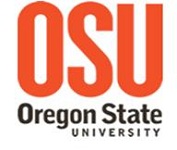- Dr. Stacey Harper received a five-year, $3.3 million award from the National Science Foundation to study the risks of micro- and nanoplastics to aquatic organisms in the pacific northwest.
- Dr. Stacey Harper received a five-year, $1.9 million award as an Outstanding New Environmental Scientist (ONES) from the National Institute of Environmental Health Sciences (NIEHS) and was selected as 2013 recipient of the L.L. Stewart Faculty Scholars Award which recognizes an outstanding faculty members at Oregon State University.
You are here
S-nitrosocaptopril Nanoparticles as Nitric Oxide-Liberating and Transnitrosylating Anti-infective Technology
| Title | S-nitrosocaptopril Nanoparticles as Nitric Oxide-Liberating and Transnitrosylating Anti-infective Technology |
| Publication Type | Journal Article |
| Year of Publication | 2014 |
| Authors | Mordorski B, Pelgrift R, Adler B, Krausz A, Neto ABatista da, Liang H, Gunther L, Clendaniel A, Harper S, Friedman JM, Nosanchuk JD, Nacharaju P, Friedman AJ |
| Journal | Nanomedicine |
| Date Published | 2014 Nov 15 |
| ISSN | 1549-9642 |
| Abstract | Nitric oxide (NO) is an essential agent of the innate immune system which exhibits multi-mechanistic antimicrobial activity. Previously, NO-releasing nanoparticles (NO-np) demonstrated increased antimicrobial activity when combined with glutathione (GSH), versus NO-np alone, due to formation of S-nitrosoglutathione (GSNO), a transnitrosylating agent. To capitalize on this finding, we incorporated the thiol-containing ACE-inhibitor, captopril, into the NO-np system to form SNO-CAP-np, nanoparticles that both release NO and form S-nitrosocaptopril. In the presence of GSH, SNO-CAP-np demonstrated increased transnitrosylation activity compared to NO-np, as exhibited by increased GSNO formation. Escherichia coli and methicillin-resistant Staphylococcus aureus were highly susceptible to SNO-CAP-np in a dose-dependent fashion, with E. coli being most susceptible, and SNO-CAP-np were nontoxic in zebrafish embryos at translatable concentrations. Given SNO-CAP-np's increased transnitrosylation activity and increased E. coli susceptibility compared to NO-np, transnitrosylation rather than free NO is likely responsible for overcoming E. coli's resistance mechanisms and ultimately killing the pathogen. |
| DOI | 10.1016/j.nano.2014.09.017 |
| Alternate Journal | Nanomedicine |
| PubMed ID | 25461287 |
Theme by Danetsoft and Danang Probo Sayekti inspired by Maksimer
